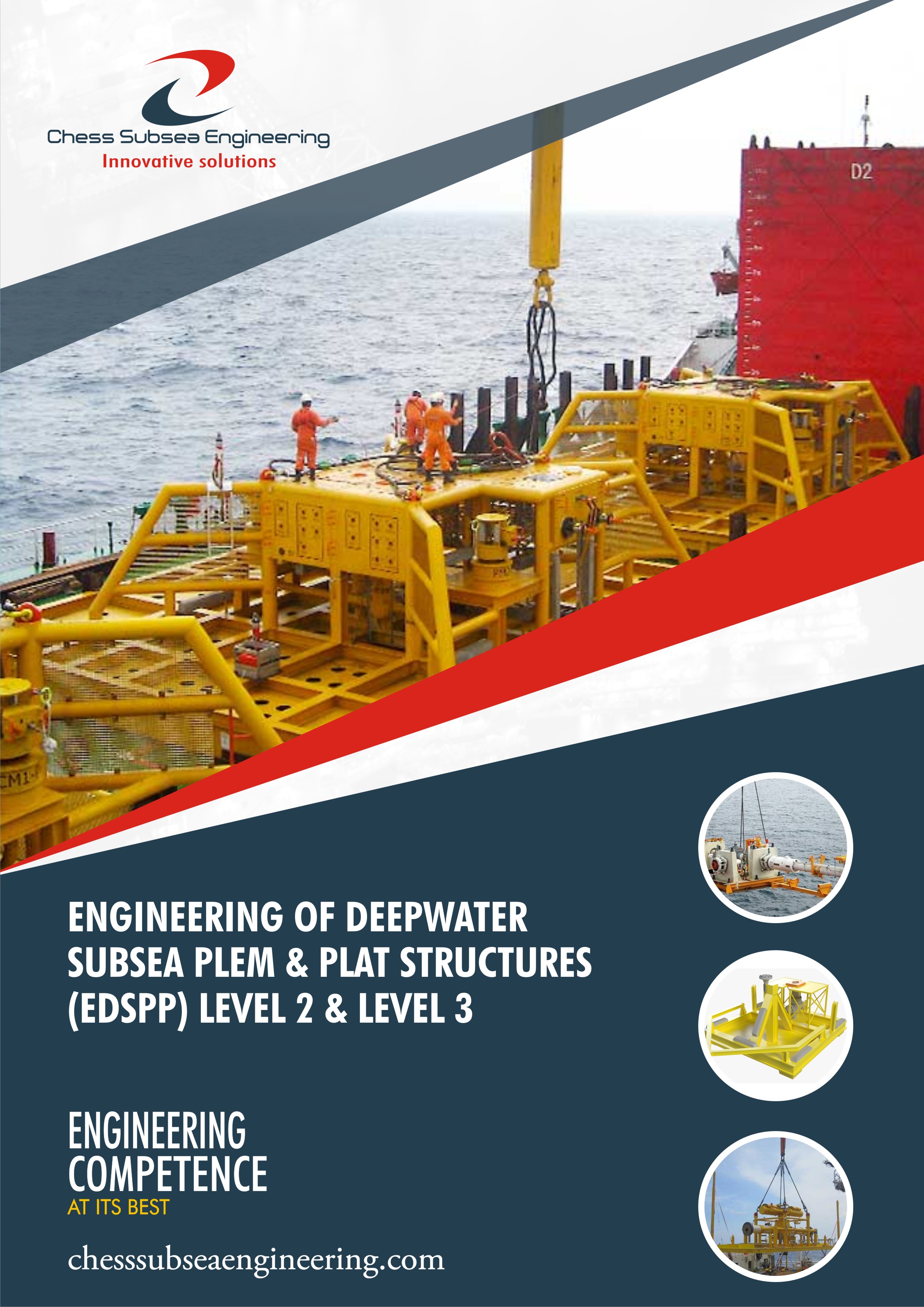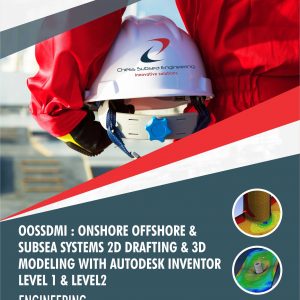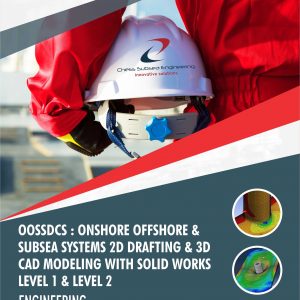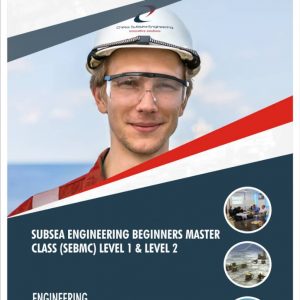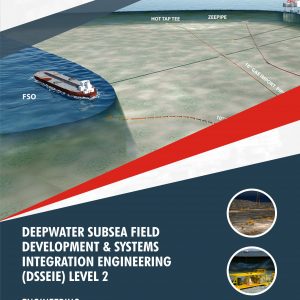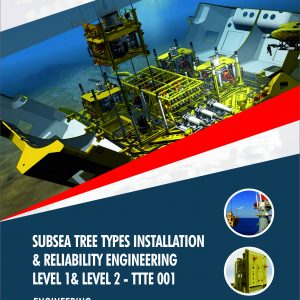Description
The EDSPP Level 1 to Level 3 course is designed to provide comprehensive training on the engineering aspects of deepwater subsea PLEM (Pipeline End Manifold) and PLAT (Pipeline Lateral Termination) structures.
This course covers the fundamental principles of subsea engineering, focusing specifically on the design, analysis, and installation of PLEM and PLAT structures in deepwater environments.
Participants will learn about the key components and systems of PLEM and PLAT structures, including subsea valves, piping, control systems, and foundation design, through theoretical lectures and practical exercises.
The course progresses from Level 1 to Level 3, with each level building upon the knowledge gained in the previous level. Participants will gain a deeper understanding of advanced topics such as fatigue analysis, corrosion protection, and riser design as they advance through the levels.
Upon completion of the EDSPP Level 1 to Level 3 course, participants will have the necessary skills and knowledge to effectively contribute to the engineering and project management of deepwater subsea PLEM and PLAT structures, ensuring safe and reliable operations in challenging offshore environments.
Engineering of Deepwater Subsea PLEM & PLAT Structure (EDSPP) Level 1 to Level 3 covers Subsea PLEM Field Architecture Layout, Components of Subsea PLEM, PLEM & PLET Standard of Design Practice, PLEM & PLET Structural & Strenght Analysis, Subsea PLEM / PLET Foundation, Shallow Water Plem Insllation A Case Study of Bualuang , Mudmat Analysis i.e. Penetration Resistance Skirt, Bearing Capacity During Operation, Bearing Capacity During Installation, Settlement Analysis etc, Installation Method for PLEM / PLET i.e. Installation by Wire Cable using AHTS OR CRANE BARGE, WWIM, Installation by Drilling Riser, DSIM, Sheave Installation Method, Pencil Bouy Method (PBM), Heave Compensated Loading System (HCLS), Floating Installation Device (FID) with its Installation Method, Utilization of Fibre Rope Deployment System etc., Fibre Rope Deployment System i.e., Deployment System & Rope Management Process, Handling Systems etc., Second End PLEM, First End PLEM i.e. Stress Analysis of PLEM, Crane Analysis and more.
EDSPP Level 1 to Level 3 is designed to provide detailed knowledge of Engineering of Deepwater Subsea PLEM & PLAT Structure and will assist those who are switching or enhancing there career in deep and ultra deepwaters subsea engineering.
Course Outline
Introduction to Subsea PLEM & PLET
Components of Subsea PLEM
Information for Design And Analysis
Practiced Design Codes
Strength Analysis
Load Conditions
Mudmat Analysis
Challenges In Ultra-Deep Water
Installation Method for PLEM/PLET
Fiber Rope Deployment System
Second End PLEM
First-End PLEMS
Bualuang Subsea Field ArchitectureInstallation of PLEM and Mooring Base
Loadout and Transportation
Site Specific Survey
Plem Installation
Mooring Base Installation
Installation of PLEM and Tie-In Of Expansion Spools
Installation Barge
Design of PLEM
Installation of PLEM
Expansion Spools
Installation of Spools

2D & 3D Design of Subsea PLEM & PLET via Solidworks or Inventor
Technical Support References
Ref 1: Definition and purpose of PLEM and PLAT structures
Ref 2: Overview of the subsea oil and gas industry
Ref 3: Challenges and considerations for deepwater subsea engineering
Ref 4: Subsea PLEM & PLAT Structures design criteria and standards
Ref 5: Subsea PLEM & PLAT Structures load and force analysis
Ref 6: Subsea PLEM & PLAT Structures Finite Element Analysis (FEA) and Computational Fluid Dynamics (CFD)
Ref 7: Subsea PLEM & PLAT Structures material selection and corrosion protection
Ref 8: Subsea PLEM & PLAT Structures fabrication methods and techniques
Ref 9: Subsea PLEM & PLAT Structures quality control and inspection
Ref 10: Subsea PLEM & PLAT Structures welding and non-destructive testing (NDT)
Ref 11: Subsea PLEM & PLAT Structures coating and corrosion protection
Ref 12: Subsea PLEM & PLAT Structures installation methods and techniques
Ref 13: Subsea PLEM & PLAT Structures risers and umbilicals
Ref 14: Subsea PLEM & PLAT Structures commissioning and testing
Ref 15: Subsea PLEM & PLAT Structures maintenance and inspection strategies
Ref 16: Subsea PLEM & PLAT Structures remote operated vehicles (ROVs) and underwater inspections
Ref 17: Subsea PLEM & PLAT Structures corrosion management
Ref 18: Subsea PLEM & PLAT Structures life extension and decommissioning
Ref 19: Case studies of successful and challenging subsea PLEM & PLAT projects
Ref 20: Real-world examples of PLEM and PLAT structures in operation
Ref 21: Subsea PLEM & PLAT emerging technologies and future developments
Assessment
Participant underpinning knowledge of Engineering of Deepwater Subsea PLEM & PLAT Structure will be accessed with short answer multiple-choice questionnaire at the conclusion of the course.
Outcome
Participants will gain an in debt understanding of engineering of deepwater subsea PLEM & PLAT structure along with its project management. They will also be able to function with minimum supervision as a Subsea Engineer for IOCs, subsea pipeline company contractor, vendor or installation company.
Professional Certificate
Issued directly by Chess Subsea Engineering Europe.
Participant may be presented for Offshore Petroleum Training Organization (OPITO) Certification.
How to Register
Click here to download registeration booklet on msword and email completed booklet to info@chesssubseaengineering.org directly.





